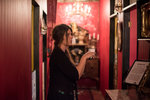
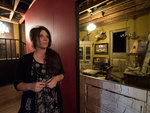
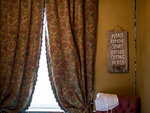
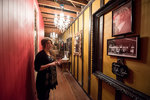
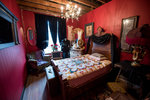
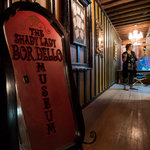
An intricate layout of brothel cribs can be found atop many of Centralia’s buildings, depicting a time long gone when bordellos were connected with secret passages and hidden doorways.
Lodging was present throughout much of the buildings, and the girls were just the icing on the cake, said Holly Phelps, the owner of a one-of-a-kind museum that will highlight that history.
That Bordello Museum will open Friday, showcasing some of the brothel cribs located above The Shady Lady in downtown Centralia.
Tight corridors painted red, elaborate chandeliers and pieces of history give tribute to a woman Phelps said was an entrepreneur before her time. The space that was modeled to depict bedrooms, sitting rooms and ladies’ changing rooms are patterned to highlight a town madame that was well revered.
Madame Ruth Rucker lived from 1908 to 1976 and was focused on giving opportunities of work to women at a time when women could not vote, own a business or even read.
Born to a pair of traveling preachers, Rucker was a “crazy free spirit before her time,” Phelps said
Rucker entered into the brothel business during her marriage to Centralia’s Police Chief Otto Rucker. He helped control the money the women made and the bootlegging operations at the time, Phelps said.
Many of the working girls who sold themselves in Centralia came upon hard times and were in need of a little help. Phelps said they would hop the rails and come to Centralia, where they would average about $10 a week. After that they would go back home, until money was tight again.
“A lot of them were not these women who were just the underbelly of society,” Phelps said. “A lot of them were someone who just had to make ends meet.”
During the 8 months it took to get the museum ready, Phelps said that after hearing stories of the working women, she fell in love with Rucker’s free spirit, and her wonderful wit. As an entrepreneur herself, Phelps said Rucker embodied that.
“It was not about making money, but about having a business,” Phelps said. “She forged the way to enable all of us in a way in the bigger picture.”
Phelps said there are many women in business in downtown Centralia, an opportunity that Rucker essentially created, although the line of work is much different now.
Rucker ensured the women could work in a way they were still respected.
“She didn’t feel like you should ever be the lower version of prostitution,” Phelps said. “She really felt you could elevate yourself and still be classy and maintain a decorum as a women.”
Rucker met her demise in questionable circumstances and was found face down in a guest bedroom, likely murdered. At the time of her death she had six lovers, and seven men who carried her.
According to Phelps, her funeral was standing room only.
The museum was “a labor of love” for Phelps. She hopes it will invite people to bring more stories about the working girls of Centralia, an interesting part of the city’s history.
“There was not a lot of honor for her in her family, so it’s great to share her,” Phelps said. “... Anything that brings anyone to our downtown, is good in my mind.”